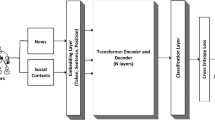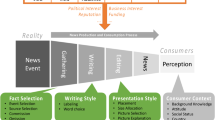Abstract
Automatically generate accurate summaries from legal public opinion news can help readers to grasp the main ideas of news quickly. Although many improved sequence-to-sequence models have been proposed for the abstractive text summarization task, these approaches confront two challenges when addressing domain-specific summarization task: (1) the appropriate selection of domain knowledge; (2) the effective manner of integrating domain knowledge into summarization model. In order to tackle the above challenges, this paper selects the pre-training topic information as the legal domain knowledge, which is then integrated into the sequence-to-sequence model to improve the performance of public opinion news summarization. Concretely, two kinds of topic information are utilized: first, the topic words which denote the main aspects of the source document are encoded to guide the decoding process. Furthermore, the predicted output is forced to have a similar topic probability distribution with the source document. We evaluate our model on a large dataset of legal public opinion news collected from micro-blog, and the experimental results show that the proposed model outperforms existing baseline systems under the rouge metrics. To the best of our knowledge, this work represents the first attempt in the legal public opinion domain for text summarization task.



Similar content being viewed by others
References
Klein G, Kim Y, Deng Y, Senellart J, Rush A (2017) OpenNMT: open-source toolkit for neural machine translation. In: Proceedings of the 55th ACL annual meeting of the association for computational linguistics. ACL, pp 67–72
Rush AM, Chopra S, Weston J (2015) Neural attention model for abstractive sentence summarization. In: Proceedings of the 2015 conference on empirical methods in natural language processing, ACL, pp 379–389
Bahdanau D, Chorowski J, Serdyuk D, Brakel P, Bengio Y (2016) End-to-end attention-based large vocabulary speech recognition. In: Proceedings of the IEEE international conference on acoustics speech and signal processing. IEEE, pp 4945–4949
Zhou Q, Yang N, Wei F, Huang S, Zhou M, Zhao T (2018) Neural document summarization by jointly learning to score and select sentences. In: Proceedings of the 56th annual meeting of the association for computational linguistics. ACL, pp 654–663
Nallapati R, Zhou B, dos Santos C, Gulcehre C, Xiang B (2016) Abstractive text summarization using sequence-to-sequence RNNs and beyond. In: Proceedings of the 20th conference on computational natural language learning. ACL, pp 280–290
See A, Liu PJ, Manning CD (2017) Get to the point: summarization with pointer-generator networks. In: Proceedings of the 55th annual meeting of the association for computational linguistics. ACL, pp 1073–1083
Gu J, Lu Z, Li H, Li VO (2016) Incorporating copying mechanism in sequence-to-sequence learning. In: Proceedings of the 54th annual meeting of the association for computational linguistics. ACL, pp 1631–1640
Vinyals O, Fortunato M, Jaitly N (2015) Pointer networks. In: Proceedings of the 28th international conference on neural information processing systems. MIT Press, pp 2692–2700
Gulcehre C, Ahn S, Nallapati R, Zhou B, Bengio Y (2016) Pointing the unknown words. In: Proceedings of the 54th annual meeting of the association for computational linguistics. ACL, pp 140–149
Song K, Zhao L, Liu F (2018) Structure-infused copy mechanisms for abstractive summarization. In: Proceedings of the 27th international conference on computational linguistics, ACL, Santa Fe, August 20–26 2018, pp 1717–1729
Paulus R, Xiong C, Socher R (2017) A deep reinforced model for abstractive summarization. arXiv preprint arXiv:1705.04304
Zhang X, Lapata M (2017) Sentence simplification with deep reinforcement learning. In: Proceedings of the 2017 conference on empirical methods in natural language processing. ACL, pp 584–594
Pasunuru R, Bansal M (2018) Multi-Reward reinforced summarization with saliency and entailment. In: Proceedings of the 2018 conference of the North American chapter of the association for computational linguistics. ACL, pp 646–653
Zhou Q, Yang N, Wei F, Zhou M (2017) Selective encoding for abstractive sentence summarization. In: Proceedings of the 55th annual meeting of the association for computational linguistics. ACL, pp 1095–1104
Xia Y, Tian F, Wu L, Lin J, Qin T, Yu N, Liu TY (2017) Deliberation networks: sequence generation beyond one-pass decoding. In: Proceedings of the 31st international conference on neural information processing systems. MIT Press, pp 1784–1794
Zeng W, Luo W, Fidler S, Urtasun R (2016) Efficient summarization with read-again and copy mechanism. arXiv preprint arXiv:1611.03382
Chen YC, Bansal M (2018) Fast abstractive summarization with reinforce-selected sentence rewriting. In: Proceedings of the 56th annual meeting of the association for computational linguistics. ACL, pp 675–686
Hsu W T, Lin C K, Lee M Y, Min K, Tang J, Sun M (2018) A unified model for extractive and abstractive summarization using inconsistency loss. In: Proceedings of the 56th annual meeting of the association for computational linguistics. ACL, pp 132–141
Wang L, Yao J, Tao Y, Zhong L, Liu W, Du Q (2018) A reinforced topic-aware convolutional sequence-to-sequence model for abstractive text summarization. In: Proceedings of the international joint conference on artificial intelligence. Morgan Kaufmann, pp 4453–4460
Narayan S, Cohen SB, Lapata M (2018) Don’t give me the details, just the summary! topic-aware convolutional neural networks for extreme summarization. In: Proceedings of the 2018 conference on empirical methods in natural language processing. ACL, pp 1797–1807
Hou L, Hu P, Cao W (2019) Automatic chinese abstractive summarization with topical keywords fusion. Acta Autom Sin 45(3):530–539
Wang Y, Li J, Chan HP (2019) Topic-aware neural keyphrase generation for social media language. arXiv preprint arXiv:1906.03889
Miao Y, Grefenstette E, Blunsom P (2017) Discovering discrete latent topics with neural variational inference. In: Proceedings of the 34th international conference on machine learning. ACM, pp 2410–2419
Kumar R, Raghuveer K (2012) Legal document summarization using latent dirichlet allocation. Int J Comput Sci Telecommun 3:114–117
Galgani F, Compton P, Hoffmann A (2012) Combining different summarization techniques for legal text. In: Proceedings of the workshop on innovative hybrid approaches to the processing of textual data. Association for Computational Linguistics. ACL, pp 115–123
Elnaggar A, Gebendorfer C, Glaser I (2018) Multi-task deep learning for legal document translation, summarization and multi-label classification. In: Proceedings of the 2018 artificial intelligence and cloud computing conference. ACM, pp 9–15
Manor L, Li JJ (2019) Plain english summarization of contracts. In: Proceedings of the natural legal language processing workshop. ACL, pp 1–11
Ma S, Sun X, Lin J, Reb X(2018) A hierarchical end-to-end model for jointly improving text summarization and sentiment classification. In: Proceedings of the twenty-seventh international joint conference on artificial intelligence. Morgan Kaufmann, pp 4251–4257
Hochreiter S, Jürgen S (1997) LSTM can solve hard long time lag problems. In: Proceedings of the advances in neural information processing systems. MIT Press, pp 473–479
Bahdanau D, Cho K, Bengio Y (2014) Neural machine translation by jointly learning to align and translate. arXiv preprint arXiv:1409.0473
Bahdanau D, Chorowski J, Serdyuk D, Brakel P, Bengio Y (2016) End-to-end attention-based large vocabulary speech recognition. In: Proceeding of the 2016 IEEE international conference on acoustics, speech and signal processing. IEEE, pp 4945–4949
Blei DM, Ng AY, Jordan MI (2003) Latent dirichlet allocation. J Mach Learn Res 3:993–1022
Lin CY (2004) Rouge: A package for automatic evaluation of summaries. In: Proceedings of the workshop on text summarization branches out, post conference workshop of ACL. ACL, pp 74–81
Jonas G, Michael A, David G, Denis Y, Yann ND (2017) Convolutional sequence to sequence learning. In: Proceedings of the 34th international conference on machine learning. ACM, pp 1243–1252
Paszke A, Gross S, Chintala S (2017) Automatic differentiation in PyTorch. In: Proceedings of the NIPS auto diff workshop. MIT Press
Hu Z, Li X, Tu C, Liu Z, Sun M (2018) Few-shot charge prediction with discriminative legal attributes. In: Proceedings of the 27th international conference on computational linguistics. ACL, pp 487–498
Kingma DP, Ba J (2014) Adam: a method for stochastic optimization. arXiv preprint arXiv:1412.6980
Sutskever I, Martens J, Dahl G, and Hinton G (2013) On the importance of initialization and momentum in deep learning. In: Proceedings of International conference on machine learning. ACM, pages 1139–1147
Hermann KM, Kocisky T, Grefenstette E, Espeholt L, Kay W, Suleyman M, Blunsom P (2015) Teaching machines to read and comprehend. In: Proceedings of neural information processing systems. MIT Press, pp 1693–1701
Acknowledgements
We would like to thank the anonymous reviewers for their constructive comments. This work was supported by National Key Research and Development Program of China (Grant Nos. 2018YFC0830105, 2018YFC0830101, 2018YFC0830100); National Natural Science Foundation of China (Grant Nos. 61972186, 61762056, 61472168).
Author information
Authors and Affiliations
Corresponding author
Additional information
Publisher's Note
Springer Nature remains neutral with regard to jurisdictional claims in published maps and institutional affiliations.
Rights and permissions
About this article
Cite this article
Huang, Y., Yu, Z., Guo, J. et al. Legal public opinion news abstractive summarization by incorporating topic information. Int. J. Mach. Learn. & Cyber. 11, 2039–2050 (2020). https://doi.org/10.1007/s13042-020-01093-8
Received:
Accepted:
Published:
Issue Date:
DOI: https://doi.org/10.1007/s13042-020-01093-8




